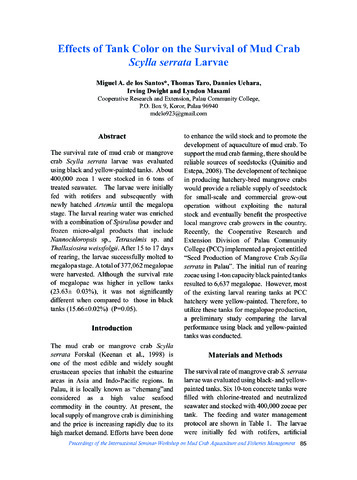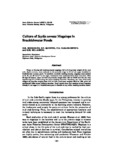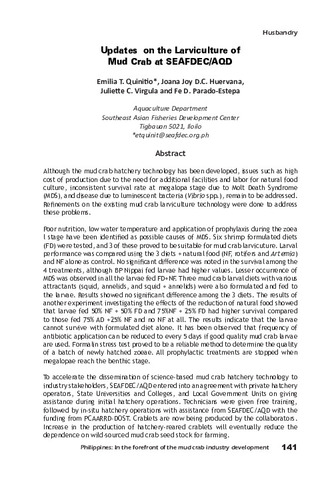Effect of tank color on the survival of mud crab Scylla serrata larvae
- Global styles
- MLA
- Vancouver
- Elsevier - Harvard
- APA
- Help

View/
Date
2015Page views
3,608ASFA keyword
AGROVOC keyword
Taxonomic term
Metadata
Show full item record
Share
Abstract
The survival rate of mud crab or mangrove crab Scylla serrata larvae was evaluated using black and yellow-painted tanks. About 400,000 zoea 1 were stocked in 6 tons of treated seawater. The larvae were initially fed with rotifers and subsequently with newly hatched Artemia until the megalopa stage. The larval rearing water was enriched with a combination of Spirulina powder and frozen micro-algal products that include Nannochloropsis sp., Tetraselmis sp. and Thallasiosira weissfolgii. After 15 to 17 days of rearing, the larvae successfully molted to megalopa stage. A total of 377,062 megalopae were harvested. Although the survival rate of megalopae was higher in yellow tanks (23.63± 0.03%), it was not significantly different when compared to those in black tanks (15.66±0.02%) (P=0.05).
Suggested Citation
de los Santos, M. A., Taro, T., Uehara, D., Dwight, I., & Masami, L. (2015). Effect of tank color on the survival of mud crab Scylla serrata larvae. In E. T. Quinitio, F. D. Parado-Estepa, Y. C. Thampi Sam Raj, & A. Mandal (Eds.), Proceedings of the International Seminar-Workshop on Mud Crab Aquaculture and Fisheries Management, 10-12 April 2013, Tamil Nadu, India (pp. 85-88). Tamil Nadu, India: Rajiv Gandhi Centre for Aquaculture (MPEDA).
Type
Conference paperISBN
9788192989815
Related items
Showing items related by title, author, creator and subject.
-
Morphological deformities in mud crab Scylla serrata juveniles exposed to antibiotics during the larval stage
The effects of antibiotics on the external deformities, growth and survival of mud crab Scylla serrata larvae and juveniles were determined. Zoeae were exposed to oxytetracycline (OTC) (0, 3.0, 6.0, 9.0, 12 mg L-1) ... -
Culture of Scylla serrata megalops in brackishwater ponds
Rodriguez, E. M.; Quinitio, E. T.; Parado-Estepa, F. D.; Millamena, O. M. (Asian Fisheries Society, 2001)Three- to five-day old hatchery-reared megalops (4.0 to 6.4 mg body weight) of the mud crab, Scylla serrata, were cultured to the juvenile stage in 20 m2 net cages installed in brackishwater nursery ponds. To ... -
Updates on the larviculture of mud crab at SEAFDEC/AQD
Quinitio, Emilia T. ; Huervana, Joana Joy D. C.; Virgula, Juliette C.; Parado-Estepa, Fe D. (Aquaculture Department, Southeast Asian Fisheries Development Center, 2017)
Although the mud crab (Scylla serrata) hatchery technology has been developed, issues such as high cost of production due to the need for additional facilities and labor for natural food culture, inconsistent survival rate ...
; Huervana, Joana Joy D. C.; Virgula, Juliette C.; Parado-Estepa, Fe D. (Aquaculture Department, Southeast Asian Fisheries Development Center, 2017)
Although the mud crab (Scylla serrata) hatchery technology has been developed, issues such as high cost of production due to the need for additional facilities and labor for natural food culture, inconsistent survival rate ...





